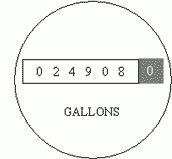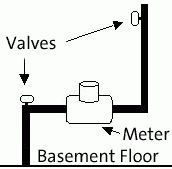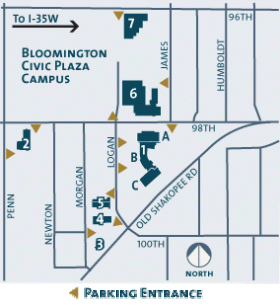Utilities Division
Important contact information
24-HOUR EMERGENCY LINE (water main breaks, water leaks, and sewer backups)
952-563-4905
Backups and leaks (during normal business hours)
952-563-8777
Water billing (start/cancel account, determining billing status of address)
952-563-8726 or utilitybilling@BloomingtonMN.gov
There are no watering restrictions in place at this time. The City continues encourage wise water use. Learn how you can help conserve water.
Much of the State of Minnesota is still abnormally dry or in moderate drought or even severe drought condition. Precipitation this fall has been beneficial for improving conditions going into the winter, but the extent and severity of the drought this summer were dramatic. The City continues to encourage residents and businesses to help conserve water and use water wisely.
Additional resources can be found here:
Backyard watering tips from the U of M Extension service
Water conservation information for residents from the Minnesota Department of Natural Resources
No lead service lines in Bloomington
In accordance with requirements of the U.S. Environmental Protection Agency’s Lead and Copper Rule Revisions, Bloomington has completed and submitted our water service line materials inventory to the Minnesota Department of Health. The accepted inventory can be viewed using the Lead Inventory Tracking Tool (LITT), available at https://maps.umn.edu/LSL/.
City staff reviewed historic city code, connection permits, customer service records, construction records, and performed limited resident-driven data collection to classify every active and inactive water service in the City. All services were determined to be non-lead, and there were no galvanized requiring replacement (GRR) and no unknown service materials identified.
Laboratory services
The Tri-City/William Lloyd Analytical Laboratory is located in the City of Bloomington's Water Treatment Plant at 9300 Poplar Bridge Road, Bloomington, MN 55437.
The lab monitors the drinking water supply for Edina, St. Louis Park, Bloomington, and other nearby water utilities.
The lab also tests water samples for private well owners, private water sampling companies, contractors, and other agencies and individuals for various chemicals and bacteriological contaminants.
To obtain testing services, call 952-563-4904. The lab is staffed from 7 a.m. - 3 p.m., Monday - Friday.
The State of Minnesota, in accordance with the Environmental Protection Agency, recommends testing well water supplies yearly for total coliform bacteria and nitrates. We can send you a test kit to sample your well supply. Please give us a call at 952-563-4904.
Tri-City William Lloyd Analytical Laboratory offers a variety of certified and non-certified tests. Please see the fee schedule below for details and current pricing.
Cash (exact), credit cards and personal checks are accepted.
| Microbiology | |
|---|---|
| *Total Coliform (MPN) Quanti-Tray 18 hr | $30.00 |
| *E. coli in Ambient Water (MPN) Quanti-Tray (18 hr) | $30.00 |
| *E. coli confirmation | $7.00 |
| *Total Coliform (P/A) Colilert-(18 hr) | $14.00 |
| Iron Related Bacteria | $40.00 |
| Sulphate Reducing Bacteria | $40.00 |
| Autoclave Spore Ampuole QC | $25.00 |
| *Well Water Analysis Sampling Package (Nitrate, Bacteria & Arsenic) | $75.00 |
| Chemistry – Metals – (price is per metal) | |
|---|---|
| *Arsenic, *Copper, *Iron, Lead & *Manganese | $30.00 |
| Chemistry – Inorganics | |
|---|---|
| Alkalinity | $12.00 |
| Chloride | $22.00 |
| Chlorine (total) | $12.00 |
| Conductivity | $12.00 |
| *Fluoride | $16.00 |
| Hardness (total) | $12.00 |
| pH | $12.00 |
| *Nitrate | $18.00 |
| *Nitrite | $18.00 |
| Phosphorus (total) | $16.00 |
| Phosphorus (ortho) | $14.00 |
| Sulfate | $22.00 |
| Total Dissolved Solids | $12.00 |
| Total Suspended Solids | $16.00 |
| Weekend Service Fee (must be approved by lab) | $258.75 |
*MDH certified
Samples are accepted for testing from 7 a.m. - 2:30 p.m., Monday - Thursday. Samples cannot be accepted on Fridays or the day before a legal holiday. Please contact us if you have further questions at 952-563-4904.
Some common water quality questions are addressed in Bloomington's annual Water Quality Report. If you need further assistance, please contact the laboratory staff at 952-563-4904.
The City regularly tests the water from Bloomington’s six deep water supply wells in addition to testing finished water that is delivered to homes and businesses. These tests look for many chemicals including PFAS or per- and polyfluoroalkyl substances, often referred to as “forever chemicals.”
To date, PFAS levels in Bloomington’s drinking water have been less than the maximum contaminant levels for PFAS established by the Environmental Protection Agency (EPA) and below Minnesota Department of Health (MDH) Health Risk Index limits.
A State PFAS dashboard is maintained by the MDH providing information on the status of testing, standards, guidance, and results for PFAS in community water systems.
The dashboard can be seen here: Interactive Dashboard on PFAS Drinking Water Status and Results
Bloomington’s levels do not exceed EPA MCLs. Additionally, actual results are listed under the tab labeled Table: MDH Guidance comparing actual results to MDH Health Risk Index limits. This table shows Bloomington’s water supply does not exceed the MDH PFAS HRI.
EPA has recently approved Maximum Contaminant Levels for certain PFAS compounds. Those can be found here: Per- and Polyfluoroalkyl Substances (PFAS)
Water production and distribution
If you are planning to plant a tree, install a fence or do other digging in your yard, make sure it doesn't turn into an electrifying experience.
State law requires you call Gopher State One Call at 651-454-0002 before beginning any digging projects on your property.
Within 48 hours, GSOC will locate all underground utilities near the proposed work site to ensure you avoid them. Visit www.gopherstateonecall.org for more information.
Because Bloomington's water surpasses all federal and state standards, home filtration systems are not necessary.
However, if you choose to purchase a filtration system for aesthetic or medical reasons, keep the following in mind:
- Choose a system that addresses your specific concerns. Find out if the type of filter you are considering is capable of removing substances that concern you.
- Look for filters that have been certified by NSF International (an independent testing group) and UL (Underwriters Laboratory).
- Follow the manufacturer's maintenance instructions carefully. When not properly maintained and serviced, filtration systems can harbor disease-causing bacteria and may actually cause illness.
Before you decide to buy a home softening system, keep the following in mind:
- Our lime softening process removes most of the hardness in Bloomington's water, reducing it from 19 grains per gallon (raw water) to about 5.4 grains per gallon (finished water).
- The water is also engineered to be noncorrosive. This helps prevent unsafe levels of lead and copper from leaching into the water from home plumbing.
Home softening systems can further reduce water hardness, usually by replacing the calcium and magnesium causing the hardness with a small amount of sodium.
Report a leaking or damaged hydrant
If you suspect a hydrant leak or damage, please call our Utilities Department at 952-563-8777, between 7:30 a.m. and 4 p.m., Monday through Friday. After business hours, on weekends, and holidays, please call our 24-hour emergency number at 952-563-4905.
Adopt a hydrant
Adopt a hydrant and do a good deed for your community this winter.
How? Clear snow away from the hydrants after a large snowfall. This will provide quick access to firefighters and water maintenance workers in case of an emergency.
About hydrant maintenance
All 4,600 fire hydrants, both City owned and private, are inspected twice yearly by the Utility Division to ensure their reliable operation. Fall hydrant inspections includes noting the general appearance of the hydrant and recording any nearby impediments such as landscaping, trees, shrubs, or other improvements that may interfere with operation of the hydrant. Any obstruction within six feet of a hydrant, such as a power transformer or communications pedestal is noted on the inspection form. Each hydrant is then operated to verify pressurization and subsequently closed to see if the hydrant barrel drains properly. Hydrant caps are removed, threads are cleaned and gaskets are replaced as needed. If any repairs to the hydrant are needed, they are scheduled to be performed prior to the onset of winter weather.
Spring hydrant inspections are essentially the same as the Fall inspections, including operation and light maintenance as needed. However, noting how the hydrant made it through the winter in terms of snow plow damage and vehicle impacts is the most important part of the Spring inspection. Any damage to a City-owned hydrant is repaired immediately. For private hydrants, owners are contacted and informed of the need for repairs, and if approved, repaired by Utility Operators. Owners are then invoiced by the City for the repairs. One exception to this arrangement is that in most cases, any private hydrant repair requiring an excavation is referred to a private utility contractor for completion of the needed work. Finally, all public and private hydrants are painted on a five-year schedule. Hydrant preparation includes abrasive blasting and priming, and coating with the bright red hydrant paint we see throughout the City.
The greatest benefit of comprehensive fire hydrant inspection and maintenance program is the reliable operation of any hydrant, public or private should it be needed for a fire event. Another important benefit to everyone in the City is the favorable insurance rating given to the City by risk assessment agencies, in part due to the ongoing Public Works operations and maintenance programs as they relate to the City's water distribution system.
Water testing services
To contact the William Lloyd Analytical Laboratory about water testing, or if you have other questions for our laboratory personnel, please call 952-563-4904 between 7 a.m. and 3:30 p.m.
How to read a water meter

There are a variety of different meters and each one looks a little different, but there are two characteristics common to all of them. The face of the register will have the unit of measure "Gallons" printed on it, and there will be a digital read-out of 6 to 8 digits. Often the last 1 or 2 digits are
printed on the register and do not move, they only hold a place value.
Your electric meter measurement is in Kilowatt Hours and your gas meter measures in Cubic Feet (Cu. Ft.). Both of these meters usually have multiple dials with a hand that points to a number. People often mistakenly read one of these meters.
Please record all of the digits, including leading and ending zeros. The meter reading in the example above would be recorded as 0 2 4 9 0 8 0.
Location of your water meter

Locating your water meter will probably be the most difficult part of this task. Your water meter will be located in the
basement of your home. If you do not have a basement, then the meter will be in a heated crawl space under your home, or on the ground level floor of your home.
The water enters your home through a copper pipe that is ¾ to 1 inch in diameter. This water line comes up through the floor and runs through the water meter, which is approximately 12 to 24 inches above the floor.
Water meter repairs
The City is responsible for your water meter repairs. If you have a problem, please call our Utilities department at 952-563-8777, between 7:30 a.m. and 4 p.m., Monday through Friday, to schedule a repair. After business hours, on weekends, and holidays, please call our 24-hour emergency number at 952-563-4905.
My water meter is in a well pit. How can I keep it from freezing?
During sub-zero temperatures, water meters housed in well pits or enclosed closets may freeze and break. One way to avoid a potential problem is to allow heat to circulate around the meter by leaving the access unobstructed and the doors to the meter closet open.
Elements that contribute to water hardness are calcium and magnesium. Our finished City water, the water delivered to your door, has a hardness of about 5.2 grains (90 parts per million).
If you are experiencing frozen water in pipes, here are a few tips that might help:
- Use hair dryer to heat the pipes.
- Wrap pipes with rags or towels and pour hot water over them until water is flowing again.
- Put a heater by the frozen pipes area to allow heat to circulate around the pipes.
- Put a fan by the frozen pipes area to allow air to circulate around the pipes.
If you suspect a water main break, please call our Utilities department at 952-563-8777 between 7:30 a.m. and 4 p.m., Monday through Friday. After business hours, on weekends, and holidays, please call our 24-hour emergency number at 952-563-4905.
Here are some tips to help you improve your pressure.
Do you have a water softener? Water softeners can plug up and affect the pressure in your whole house! What to do? Many water softeners have bypass valves -- open this valve. If your pressure improves, the water softener is the culprit.
Is the problem only at one fixture ... a sink, for instance? This is a common problem with older fixtures. The pipe feeding the fixture may be plugged or some part of the fixture itself.
-
- Screens on faucets and the holes in shower heads become plugged.
- Dishwasher valves also have screens that plug and gaskets that malfunction.
- Humidifiers can plug up with scale and malfunction.
- The vacuum breaker device on your outside faucet can malfunction.
- Your lawn sprinkler can plug.
- What to do? Clean, repair or replace the fixture or device.
Do you have a pressure regulating valve? This valve may have malfunctioned. What to do? Inspect and repair/replace valve.
Do you have old galvanized pipe in your home? Galvanized pipe can encrust with scale over the years. What to do? Replace the affected piping with copper pipe.
More questions about water pressure? Call Utilities at 952-563-8777 for assistance.
Occasionally, we receive calls reporting water that appears cloudy or milky. Cloudy water is almost always caused by the presence of either oxygen or calcium.
Oxygen: Sometimes water fresh from the tap can appear cloudy. Within a minute or two, the cloudiness rises toward the top of a glass, and before long the whole glass is crystal clear. This is caused by excess oxygen escaping from the water.
Changes in water temperature and pressure can cause the oxygen dissolved in it to reach a "supersaturated" state, where there is more oxygen in the water than it can hold. When the water passes through a faucet, the disturbance is enough to knock the oxygen out of the water, forming microscopic bubbles. The bubbles are so tiny that it takes them a long time to rise up through the water. No harm will come from using oxygenated water and you need not take any corrective action if you experience it.
Calcium: When calcium causes cloudiness, it is usually noticed in cold water. When a glassful of the cloudy water sits for about thirty minutes, a white or grayish substance settles out to the bottom of the glass. The substance is calcium, a product of our water treatment process. Such water is perfectly safe to drink or use for cooking, though it may be unappealing to look at.
The chemistry of water is surprisingly complex, and many factors influence how it behaves. We engineer Bloomington's water so that it is slightly prone to deposit a trace of calcium sediment as it travels through our distribution system. This helps to keep our water from becoming corrosive, and reduces the likelihood that it might attack our water mains or leach lead or copper from our customers' plumbing and fixtures. Usually, this calcium sediment remains at the bottom of the water mains, unnoticed by our water users.
However, the calcium can be stirred up when a large volume of water is drawn through a water main in a short time, increasing the water's velocity. Events that can increase water velocity include fire fighting, main breaks, hydrant maintenance, and water or street cleaning trucks filling their tanks at a hydrant. If you happen to turn on your cold water right after such an event, you may draw some of the stirred-up water into your pipes.
To clean calcium sediment from your system, we recommend that you wait for an hour or two to allow the water in the main to settle; the less water you use, the faster the problem will clear. Then open a large-bore faucet (such as a tub faucet) and let the cold water run for about 20 minutes. This will draw clean water through your system and should remove any remaining calcium from your pipes. We welcome your calls if you have any concerns about cloudy water, or if your water remains cloudy after taking these steps.
Water and wastewater services

The City of Bloomington Utilities Division is pleased to announce the completion of a bulk water fill station for the convenience of contractors to fill their bulk water tanks.
If you wish to utilize the station, please call 952-563-8777 to set up an account. There is no charge for establishing an account. You will be billed $9.10/1,000 gallons ($9.10 minimum) when you utilize the station.
The station is located at the Public Works Warehouse, 1700 West 98th Street, building #7, on the south side of the building.
ePermitting lets permit applicants access information about utility permits. Once registered, permit applications can be submitted immediately.
In addition to simple online permit applications, the software allows for credit card payment after fees are calculated by the City's Utilities Division.
ePermitting is not for Engineering or Building Permits.
